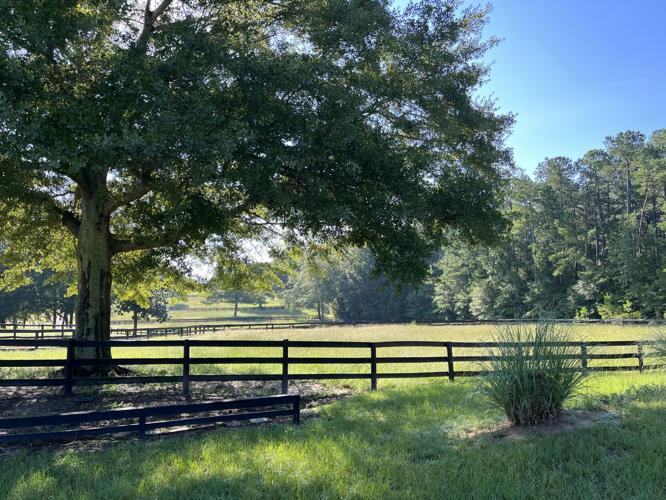A drive through the country can be so meditative. Now that spring has sprung and the weather has become idyllic, a drive through the country had an almost magnetic pull on me earlier this week. I decided to drive out Highway 302, with the windows down and Neil Young playing through my speakers. It just so happened that Neil sang about the winds on the prairie as I was driving past mile after mile of open equestrian properties. Everything seemed so relaxing and perfect.
The hills rolled on in front of me, with the open fields accentuating both the topography and the scenic views. Though all of the properties were private, I recognized that I was likely not the only person to benefit from these views unfolding before me. Anyone driving this public road surely would find this route more peaceful than, say, Whiskey Road just south of Aiken.
Equestrian properties do more than just offer a nice view when driving down the road. Take wildlife, for example. A pasture may seem to be like an ecological desert to wildlife but, for some species, a pasture offers a version of prime habitat difficult to find elsewhere in Aiken County.
Eastern meadowlarks, a lovely species with an even lovelier song, have experienced a population decline of over 75 percent range-wide since 1966. Loggerhead shrikes, a bird famous for its macabre habit of impaling insect prey on sharp objects like barbed wire fences, have declined range-wide by 76 percent since 1966. Both species are classified as “grassland” birds, and prefer natural habitats such as pine savannas and prairies. Such habitats are few and far between these days. I’ve observed both species more often on the edges of horse farms northeast of Aiken than anyplace else in the region. When reviewing sightings on the website, eBird.org, it becomes quickly apparent that I’m not the only one.
These open spaces also provide significant economic benefits. I learned recently of a study completed by the University of Kentucky in Fayette County, Kentucky, another region well-known for its horse farms and scenic drives. The study found that, for every $1 in county tax revenue, 88 cents was spent on community services for farmland (including equestrian properties) while $1.69 was spent on community services in residential developments. These community services include things like sewer capacity, fire and police services, and trash collection. In other words, residential developments, especially those located further from the core of the city (in their case, Lexington), cost more than they provided back to the county. And they were significantly more expensive to taxpayers than farms.
As Aiken grows, the value of equestrian properties and other farm land will grow, both literally and figuratively. Whether you are a person, a horse, or an Eastern meadowlark, I think that appreciation for these lands will grow through time as well. The only one who might not share the sentiment is the hapless insect impaled by a loggerhead shrike on some barbed wire. Oh well; you can’t win them all.




